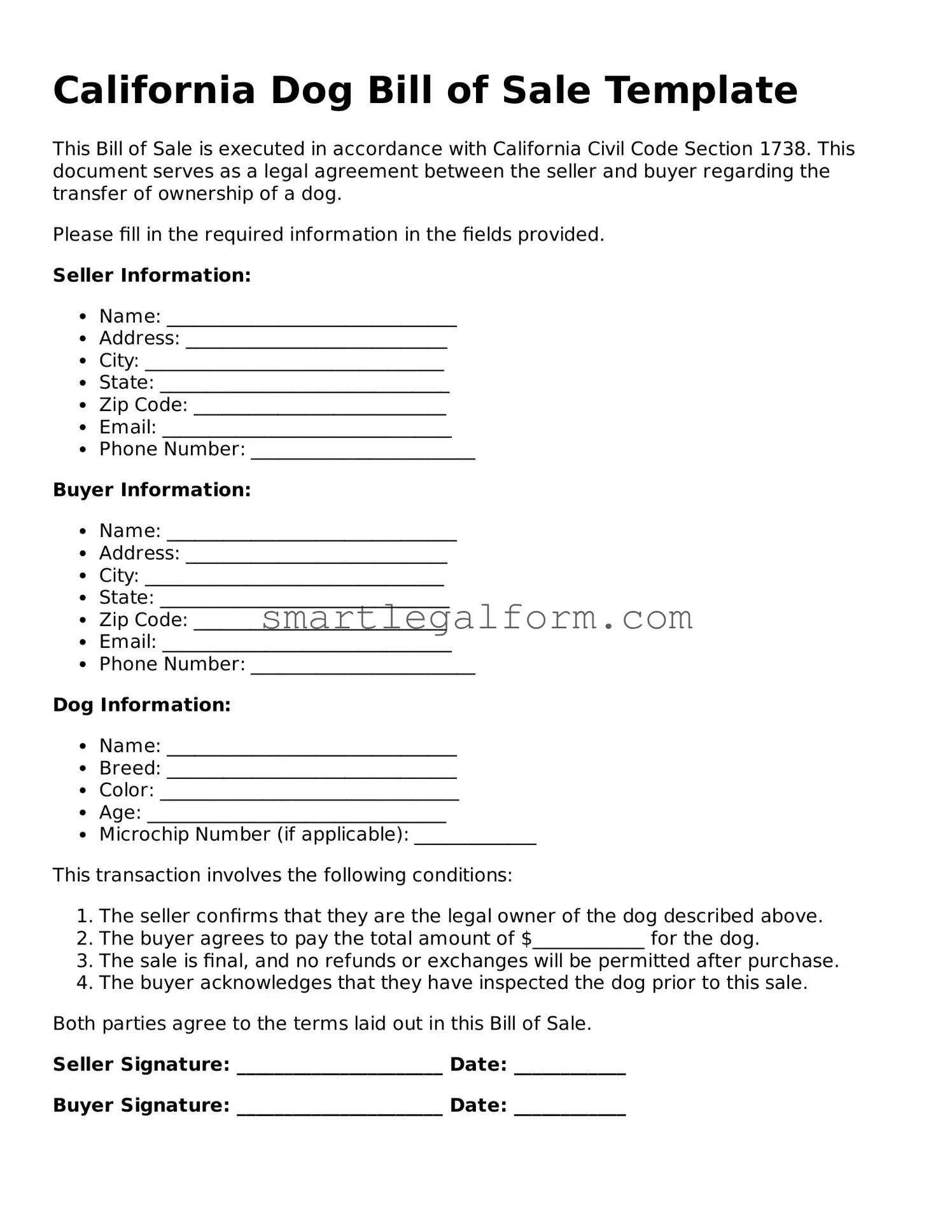Filling out the California Dog Bill of Sale form can seem straightforward, but many people make common mistakes that can lead to confusion or complications later on. One frequent error is failing to provide complete information about the dog. It’s essential to include details such as the dog’s breed, age, and any identifying features. Omitting this information can create uncertainty about the transaction.
Another mistake often seen is neglecting to include the seller’s and buyer’s full names and contact information. This information is crucial for establishing a clear record of the transaction. Without it, both parties may face difficulties in the future if questions or issues arise regarding ownership.
Some individuals forget to specify the sale price. Leaving this field blank can lead to misunderstandings about the financial terms of the sale. It’s important to clearly state the amount agreed upon to avoid any disputes later.
Additionally, many people overlook the importance of signatures. Both the seller and the buyer must sign the form to validate the transaction. Without these signatures, the document may not hold up if challenged.
Incorrect dates are another common oversight. The date of the sale should accurately reflect when the transaction takes place. This detail is important for record-keeping and can affect any future legal matters related to the sale.
Some individuals may not provide enough information about the dog’s health history. Including vaccination records or any known medical issues can protect both the seller and the buyer. This transparency helps ensure that the new owner is fully informed about the dog’s health status.
Another mistake is using vague language when describing the dog. Phrases like “good temperament” or “great with kids” can be subjective. Instead, specific traits or behaviors should be documented to give the buyer a clear understanding of what to expect.
People sometimes forget to mention any included items in the sale. If the dog comes with accessories like a crate, leash, or food, these should be listed on the form. This helps clarify what the buyer is receiving and can prevent misunderstandings.
Lastly, failing to keep a copy of the completed form is a common error. Both parties should retain a copy for their records. This serves as proof of the transaction and can be valuable if any disputes arise in the future.
By being aware of these common mistakes, individuals can ensure that their California Dog Bill of Sale is completed accurately. Taking the time to carefully fill out the form can lead to a smoother transaction and peace of mind for both the seller and the buyer.
